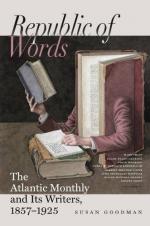The most perfect, and withal the favorite portrait of him, was the one by Severn, published in Leigh Hunt’s “Lord Byron and his Contemporaries,” and which I remember the artist’s sketching in a few minutes, one evening, when several of Keats’s friends were at his apartments in the Poultry. The portrait prefixed to the “Life,” also by Severn, is a most excellent one-look-and-expression likeness,—an every-day, and of “the earth, earthy” one;—and the last, which the same artist painted, and which is now in the possession of Mr. John Hunter, of Craig Crook, Edinburgh, may be an equally felicitous rendering of one look and manner; but I do not intimately recognize it. There is another, and a curiously unconscious likeness of him, in the charming Dulwich Gallery of Pictures. It is in the portrait of Wouvermans, by Rembrandt. It is just so much of a resemblance as to remind the friends of the poet,—though not such a one as the immortal Dutchman would have made, had the poet been his sitter. It has a plaintive and melancholy expression, which, I rejoice to say, I do not associate with him.
There is one of his attitudes, during familiar conversation, which, at times, (with the whole earnest manner and sweet expression of the man) presents itself to me, as though I had seen him only last week. The attitude I speak of was that of cherishing one leg over the knee of the other, smoothing the instep with the palm of his hand. In this action I mostly associate him in an eager parley with Leigh Hunt, in his little cottage in the “Vale of Health.” This position, if I mistake not, is in the last portrait of him at Craig Crook; if not, it is in a reminiscent one, painted after his death.
His stature could have been very little more than five feet; but he was, withal, compactly made and—well-proportioned; and before the hereditary disorder which carried him off began to show itself, he was active, athletic, and enduringly strong,—as the fight with the butcher gave full attestation.




